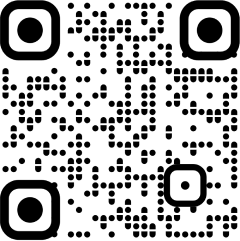
Vehicle sales have been on the rise along with the technological advancements. There has been not only a quantum jump in sales but a paradigm shift in the intrinsic nature of vehicles by integrating with and leveraging the disruptive technologies. This transformation has created a web and connected both the OEMs and consumers building an ecosystem of connected vehicles.
“When we see our sales of vehicles, we notice customers are inclined to buy more and more connected technology,” Brijesh Gubbi, AVP and Vertical Head,- New Business Strategy, Hyundai Motor India Limited, said during a panel discussion at ETAuto’s fourth edition of connected vehicle summit 2024, in New Delhi. He was sharing his views, along with other industry majors on connected vehicle technology and its importance in the automotive industry. Gubbi said that 30% of Hyundai India’s sales were of connected cars.
Connectivity has several aspects, one is ‘performance related’ which is everything related to the vehicle. Another is safety, which deals with any unfortunate incident if it happens. The last is the convenience related to tracking like locations and other, he added. Gubbi also emphasized the indigenization of the car to improve connectivity, where he specified the importance of providing India-focused features in the car.
Linking connected vehicles with consumer needs, Pratik Gupta, Co-Founder and CEO, Gensol EV, talked about three keys, first generation is enabling, second generation (current one) where there is efficiency, and third is energized. Enabling signifies a generation where consumers were using connectivity for unlocking cars, turning on air conditioning through apps and others. It is predictive maintenance, where it is talking about understanding to cut down on the service costs. The third is where it will really unlock. It’s like delivering customers a solution, which they can actually use.
The demand for connected vehicles will increase when there are safety problems, cost issues, and different scenarios related to both. These energizing features will make customers pay more for vehicles though it is possible through the present technology for less.
Jacob Peter, Executive Board member and SVP, Bosch Global Software Technologies, said how an ecosystem environment can be created through partnerships both on the architectural front, and the development side. For example the manufacturing of a car and its deployment on the roads. Here he mentioned about the architecture’s north and south. North is ‘cloud’ and south is ‘chip’. He further said many big chip manufacturing companies are entering the field.
When you talk about connected and servicing, and the willingness of the customer to pay, there is a fundamental shift in the value chain of how you’re moving from a one-time efficiency economy, where you sell an asset and just have a structured revenue stream, to where you can get on to the next, Jacob Peter said.
About the challenge of interoperability, Raghavendra Kulkarni, MD – Software Defined Vehicle – Industry X, Advanced Technology Centre, Accenture, said if the OEM wants to do it, there is a give and take in interoperability. They say there are certain APIs which need to be accessible for the googles of the world.
Explaining his statement he said, “For an Android, he has to really look at what kind of operating system the OEM has to provide and what level of openness that needs to be done.” Talking about how telematics, chip making, OEMs, and others can assemble, he said, “vehicle infotainment will be the first frontier where everybody will come together.”
Connectivity not only creates an imaginary web, but also archives personal information of the vehicle. This information can be used in several ways one such can be when an OEM decides to monetize the data with some other company.
Monetisation of data
Monetization of data can happen as millions of data is collected by the OEMs per second. However, how data is used depends on the OEM/data owner, thus escalating safety concerns. On which, Brijesh Gubbi said, “What is most important is to safely store, have the privacy agreements in place and show the value back to the customer.”
While traveling in a cab the connectivity can track the pattern of behavior of the vehicle and driver, bringing a safer environment for passengers.
Connectivity in fleet vehicles (cab services) are essential to track down the vehicle, to record the driving pattern of the driver, safety of the vehicle and customer, and improve customer satisfaction, Pratik Gupta said.
“If you are in the market of delivering a quality service, with minimal downtime, you are going to ask OEMs to give you more connected cars with more intelligent features, better dashboards. That can alert things, that can put things in operations. So automate the entire process and not leave it to people in the value chain, because when you’re running a nationwide fleet, it’s impossible to do that and deliver a service across the board”, he added.
Satish Sundaresan, MD, Elektrobit India, discussed how the 5G data aids connectivity in a car. 5G latency is better than typically visual sense, which means that they have a tech where the car communicates with a cloud faster than what eyes can process. Through 5G the car connectivity will shoot up with an interesting part of connection to infrastructure. He also explained how traffic can be managed centrally through 5g that will diversify the connectivity ecosystem.
Talking about the requirements of Bharat NCAP and Global NCAP, the panellists showed their appreciation for them as they believe safety is not only restricted to road infrastructure, driving of the car but also how safe a car can keep its passengers inside if any accident occurs.

















